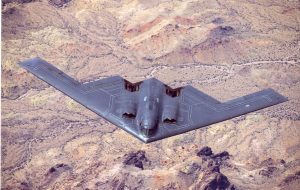The proliferation of unmanned aerial vehicle (UAV) technology has been a double-edged sword for global armed forces and law enforcement agencies. On the one hand, the rapid industrialisation of small- to medium-sized UAVs has permitted the adoption of cost-effective force multipliers in intelligence, surveillance, and reconnaissance (ISR) and precision strike operations. However, violent non-state actors (VNSAs) and emerging threats to national security have been able to acquire the same technology for loitering munitions, giving rise to new risks extending to a strategic level. The challenge also extends across the air, land, and sea domains. From critical infrastructure to mechanised brigades to naval assets, loitering munitions have developed into relatively cheap systems that can cause significant damage to a wide variety of targets. In this global security context, counter-unmanned aerial systems (C-UAS) capabilities have become a modernisation imperative for armed forces and national security agencies.
Understanding the operating theatre
Supporting C-UAS operations and incorporating them into a national defence strategy requires a profound understanding of the threat and operational landscape. While loitering munitions pose a serious kinetic threat, hostile UAVs can conduct intelligence gathering and other electronic warfare missions. There is also a stark difference in being able to counter commercial-off-the-shelf (COTS) UAVs and military UAVs. From a soft-kill perspective, military UAVs typically utilise encrypted communication, anti-jamming technology, and hardened cyber defences to protect sensitive mission data and control links. Another critical consideration is the lethality score. As recent conflicts have demonstrated, the cost of defeating UAVs and loitering munitions via hard-kill systems can significantly outweigh the cost of the hostile system.
Edge’s advanced solutions
In understanding these challenges, EDGE, one of the world’s leading advanced technology and defence groups, has developed an advanced suite of C-UAS solutions. Focused on defeating modern unmanned aerial threats, EDGE’s C-UAS suite includes soft-kill and hard-kill systems, AI-enhanced sensors, and cutting-edge command and control (C2) systems.
Non-kinetic Effectors (Soft-Kill)

EDGE currently offers an advanced mission-ready soft-kill system, the SKYSHIELD C-UAS, integrated with the D-PROTECT and NAVCONTROL solutions. Developed by SIGN4L, EDGE’s leading provider of electronic warfare solutions in the UAE, the SKYSHIELD systems provide a range of features for radio-frequency (RF) and Global Navigation Satellite System (GNSS) jamming and spoofing. The D-PROTECT is an advanced jamming solution that targets UAS C2 channels and GNSS signals. Covering the full GNSS spectrum with the option to spoof a range within the spectrum, the D-PROTECT ensures resistance against unprotected and hostile GNSS-navigated platforms at up to ten kilometres through creating RF noise that overwhelms the UAV and the ground control station or remote pilot’s receivers.

The NAVCONTROL utilises the most advanced GNSS jamming and spoofing measures to provide robust defence against hostile UAVs. With a typical range of 50km for unprotected platforms, the NAVCONTROL emulates and produces GNSS navigation signals to redirect hostile UAVs. The SKYSHIELD, deployed as either a fixed, trailer-mounted, vehicle-mounted, or naval system, also offers detection and identification capabilities through integrating a range of electro-optic (E/O) and radar options based on the end-users’ operational requirements.
Kinetic Effectors (Hard-Kill)
A modern C-UAS strategy must include kinetic effectors while balancing a relatively cost-effective lethality score. In doing so, it becomes evident that a single kinetic effector to address all UAS threats is not viable. If the effector’s capabilities are too advanced, it is highly likely that its lethality will come at a high cost. If the effector’s capabilities are inadequate, its lack of lethality will mean damage and loss. UAVs have also evolved into a variety of specialist sub-categories, each with distinct characteristics and roles. These include fixed-wing, multi-rotor, or rotary-wing systems; micro, medium-altitude, long-endurance (MALE), and high-altitude, long-endurance (HALE); as well as loitering munitions or unmanned combat aerial vehicles (UCAVs). There is a plethora of unmanned aerial threats that a modern armed force must account for. It is therefore critical that armed forces utilise the appropriate kinetic effectors.
For defeating tactical loitering munitions and low- to medium-altitude UAVs, EDGE currently offers two interceptors, the SHADOW 3 and ALLAG-E (Electric).
SHADOW 3

Developed by ADASI, a regional leader in autonomous systems and services within EDGE, the SHADOW 3 is a portable, vertical take-off UAS currently in the prototyping phase of development. The cruciform wing UAS is equipped with GNSS anti-jamming and uniquely fulfils the role as either a loitering munition or interceptor. Depending on operational requirements, it features a modular rear section to accommodate four electrical push propellers or a turbine jet engine.
ALLAG-E
The ALLAG-E is a modern C-UAS designed to counter a wide range of UASs at an altitude of up to 3,000m (9,900ft). Under development by ADVANCED CONCEPTS, an entity within EDGE dedicated to the design and deployment of advanced, innovative technologies, the ALLAG-E is propelled by two electric-duct-fan engines, providing a maximum airspeed of over 250km/h.
SKYKNIGHT

To counter unmanned aerial threats with tactical capabilities, EDGE offers the SKYKNIGHT air defence missile system. Developed by HALCON, a regional leader in the end-to-end design and manufacturing of smart weapons within EDGE, the SKYKNIGHT is a mobile or static, rapidly deployable, and comprehensive inner-layer air defence system. Currently in the advanced testing phase, the SKYKNIGHT protects against a wide variety of asymmetric and conventional threats and can track and defeat up to 80 incoming targets simultaneously.
Sensors

Similar to an air defence system, a modern C-UAS solution needs to include appropriate sensors. Through understanding that precision interception requires precision find, EDGE offers a line of sensors that is scalable to C-UAS requirements. For detecting and tracking tactical unmanned aerial threats, an ideal solution is the TAWAQ-X air-surveillance radar. Developed by EDGE’s Technology & Innovation (T&I) cluster, the TAWAQ-X is a short-range, low-altitude 3D X-band radar with automatic object classification capabilities that includes micro-UAVs. For threats at a tactical and strategic level, EDGE’s T&I cluster offers the MTR-1, a multifunction active electronically-scanned array (AESA) radar for ground-based air defence. With advanced features including air surveillance, weapon location and fire ranging, threat tracking, classification, and drone detection, the MTR-1 is also equipped with its own-missile tracking capabilities.
C4ISR
A final point to highlight is that recent conflicts have proven that effective C-UAS strategies must adopt a comprehensive and advanced architecture to ensure national security. Centralised and networked C2 will be needed, enabling a data ecosystem that combines real-time satellite imagery, live video feeds, and sensor analytics to provide a rapid tactical response. As a command, control, communications, computers, and ISR (C4ISR) concept, EDGE is developing AI-powered geospatial intelligence solutions designed for large-scale monitoring and tactical operations. Utilising advanced AI capabilities including adaptive learning, object identification, super resolution, and 3D reconstruction, EDGE is working to integrate the latest technology in empowering users to make precise, data-driven decisions.
EDGE’s Comprehensive Coverage for C-UAS Operations
UAS and loitering munition threats are diverse with greatly differing capabilities. In the modern theatre of operations and for national security, armed forces must employ a unified C-UAS strategy that accounts for tactical and strategic threats. The latest solutions from EDGE clearly demonstrate this requirement. Through providing a range of advanced effectors, latest technology sensors, and next-generation C2 solutions, an armed force is supplied with the mission-critical equipment needed to effectively safeguard its sovereignty and control airspace.














